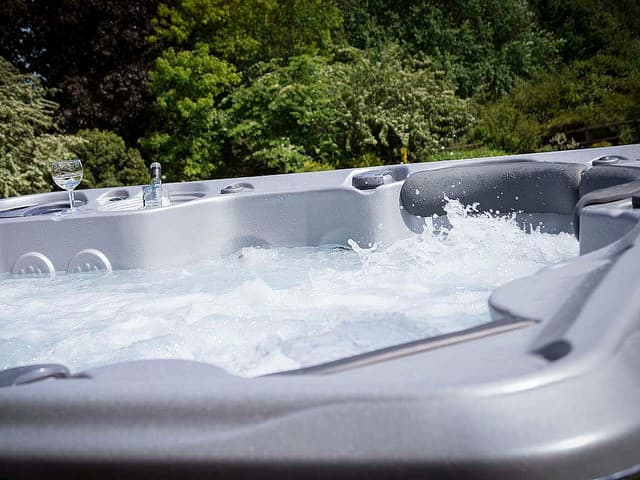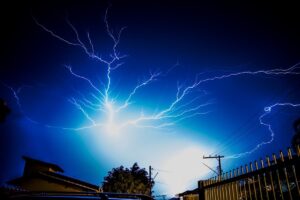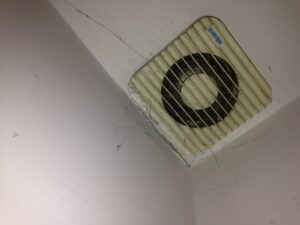 Updated August 2019
Updated August 2019
There are few things more pleasurable than a long soak in a hot tub. After a long day of working in the office or in the yard, it’s truly a treat to immerse your tired body into hot, roiling water.
If you are one of the many people who would like the ability to do some hot tubbing on the regular, then installing a hot tub in your backyard may be the answer to your prayers.
However, mixing electricity and water presents the possibility of danger. When installing electrical wiring, it’s vital to rely on experts such as the award-winning Vancouver WA electricians at Prairie Electric. If you run into any trouble or are simply unsure about the proper set-up, just give us a call before turning on the power and jumping in.
Service panel electrical capacity
Remember: Experienced electrical and installation technicians should perform jobs of this nature. If you have any doubt whatsoever about a project of this type, then you should consult an expert. The old saying rings true when it comes to installing a hot water heater: An ounce of prevention is worth a pound of cure. And in this case, the prevention includes following local regulations and seeking the oversight and recommendations of someone who has done this type of work many times before.
Still thinking of installing a water heater yourself? Certain that you’re up to the task? Understand wiring diagrams, breaker boxes (control boxes, control panels, GFCI breakers, etc.), copper wires, code requirements, local codes, and more? Well then, let’s carry on.
The first thing you should check after you have decided to wire your own hot tub installation: the service panel (or breaker panel, or one of the terms listed above!). Make sure it has enough open slots of sufficient amperage capacity to accommodate the power requirements of your tub. You’ll likely need at least two adjacent slots in the panel and for the installation of the double pole breaker, which is used to supply your 240-volt circuits with the power they require.
Hot tub building codes
Another factor to consider: determining whether or not your yard is suitable for a tub in the first place. Each city has specific building codes that address installing tubs on residential property. Do a quick search for your city’s building codes to ensure that you’re following safety protocols.
For example, for “Fences, Decks and Outdoor Projects,” the city of Portland requires a permit and inspections, depending on what’s powering the hot tub — electrical or gas — and if it’s connected to a plumbing system.
For hot tubs:
- With a direct connection to a plumbing system: Plumbing permit and inspection
- Gas heated: Mechanical permit and inspection
- Electrically heated: Electrical permit and inspection
In Vancouver, as in many cities, including Portland, the proper process requires some more digging. According to the city of Vancouver, projects exempt from building permits include “Prefabricated swimming pools, hot tubs and spas supported directly on grade accessory to one- and two-family dwelling occupancies in which the pool walls are entirely above grade, but not more than twenty-four (24) inches high, and the pool capacity does not exceed 5,000 gallons and the pool, hot tub or spa electrical equipment is cord and plug connected only and filling with water is done via a hose bib with portable hose.”
Contact your local officials to make sure that you remain compliant before, during, and after the project. Municipal building codes will address overhead power lines, metal objects near the hot tub, and underground wiring concerns.
Hot tub wiring considerations
When running wiring from the service panel to the hot tub, protect it with PVC or metal conduit. You can run your hot tub wiring through the basement or accessible crawl space inside the home. You can even run it underground if the wiring spans more than five feet.
Be sure to check your owner’s manual to ensure you have the gauge required for a safe power connection.
Wiring tips during the hot tub install process
- Proper tub installation: Check your town’s requirements for bonding metallic parts in and outside your hot tub Depending on your municipality, there may be different requirements involved when bonding metallic parts in and outside your hot tub to prevent electrocution.
- Remember GFCI (ground-fault circuit interrupters): GFCIs shut off the power to the hot tub should there be a sudden power surge that exceeds the capacity of your circuit breaker. All circuit breakers, fuses, and quick-disconnect boxes need to be a minimum of five feet away from the hot tub. This allows the GFCI to do its job.
- Positioning of your hot tub: You need to keep in mind the distance your hot tub sits from any electrical cables, including overhead power lines. The minimum distance between any conductive cables and your tub is 22.5 feet. Measure this distance from the top basin edge to the nearest surface of electrical or communications cabling. It’s essential to make sure your hot tub is positioned correctly. This will help avoid accidents — and help you enjoy your tub for years to come.
After following all the procedures laid out in your owner’s manual, be sure to double check all connections, confirm your work follows your city’s building codes, and ask a licensed electrician to look over the hot tub installation before switching power on and hopping in the water.
Happy hot-tubbing!


